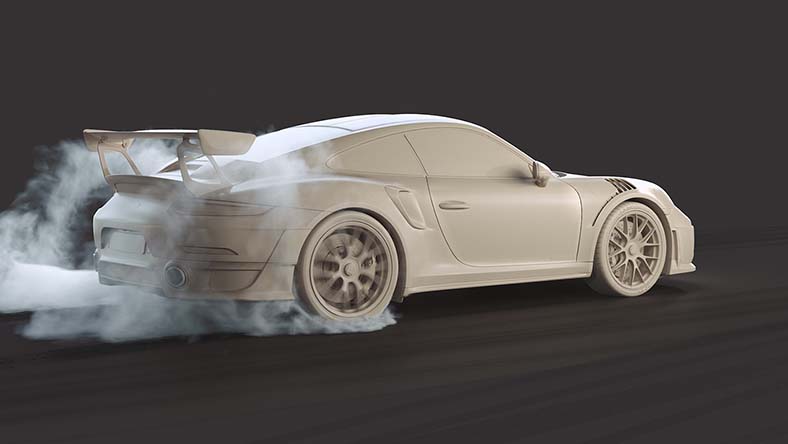& Construction

Integrated BIM tools, including Revit, AutoCAD, and Civil 3D
& Manufacturing

Professional CAD/CAM tools built on Inventor and AutoCAD
Virtual photography, also known as 3D product imaging, is a method of creating imagery to represent physical objects using digital technology to blend flat graphics with 3D models.
Image courtesy of Damian Bilinski
Move beyond 2D content and deliver a unique 3D shopping experience to your shoppers online. 3D modeling for ecommerce can provide interactive features for your store including 360-degree images and augmented reality visualizations of your products in the real world.
Image courtesy of Diamond Works
Create photorealistic imagery for your products to use in your store or for marketing and sales materials. Combine 3D models with detailed textures and 2D graphical overlays to render a high-quality image of your product that looks good from any angle.
3D commerce describes cutting-edge technologies designed to improve the quality and interactivity of online shopping.
Product visualization can help quickly generate photorealistic imagery of products at scale by combining 2D graphics and 3D models to render files that can be used for different needs.
Image courtesy of Golden Vision Studio
Provide an immersive experience for customers with augmented reality and allow them to view a 3D model of products in their own environment before making a purchase.
Image courtesy of Erik Tadevosyan
Configurable products benefit from visual product configuration software by rendering images in real-time, mapping onto 3D models to display a final product visual to the customer.
Image courtesy of Kalpesh Patil
Image courtesy of Kalpesh Patil
Technology has evolved the way both online and retail shoppers browse and interact with products they are researching or looking to purchase. Autodesk explores the various advancements and looks to the future to maximize the shopping experience for your customers.
Scale your studio’s rendering and simulation capabilities, while equipping artists with powerful modeling and animation tools
Learn more about 3D commerce technologies with these resources from Autodesk.
This webinar explores the benefits and workflows for eCommerce using 3ds Max for digital asset creation pipelines.
Discover how CGI Furniture utilizes 3ds Max for 3D product models as part of their design-to-production pipeline.
3D renders are an important part of the sales process in the automotive industry for online vehicle customization.
Learn about the history of e-Commerce, how it became the most important component in retail, and Autodesk's role in this revolutionary industry.
Learn more about virtual photography and 3D commerce technologies with these commonly asked questions.
Product configuration is the process of utilizing interactive software to allow customers to configure and customize a product based on certain traits or characteristics prior to purchasing and rendering an image of that product in real-time. It aims to reduce stocks by shifting towards a "make to order" model for on-demand shopping.
Maya and 3ds Max from Autodesk provide tools for product design and manufacturing including 3D visualization and photorealistic rendering.
When selling online it's important to provide as much visual information as possible to prospective customers to convince them to purchase your product. Manufacturers who sell highly complex and customizable goods with potentially thousands of different configurations will often struggle to find a scalable method for product imagery that fits within their available time and budget. 3D product visualization software can help generate high-quality photorealistic graphics for products from various angles and scales. AR and VR can also provide an interactive product asset based on a 3D model.
Product visualization provides customers with a highly detailed 3D render of the product they are considering which can help address any questions or concerns they may have and increase the likelihood of purchase.
Autodesk offers software that can assist in creating 3D product visualizations for various stages of the components of product visualization. To learn more about the options (including pricing), visit the product overview pages: 3ds Max, Arnold M&E, AutoCAD, Fusion 360.
The product visualization workflow goes through various stages using Autodesk software to deliver high-quality imagery for your products.
Initial design: The first step of creating a product visualization is to use CAD (Computer-Aided Design) software to create a sketch/drawing of your initial design. This process can also be broken down into various drafts using a software such as Sketchbook for the initial design and Inventor to finalize the product. (Autodesk software includes: SketchBook, AutoCAD, Inventor, or Fusion 360)
Creating a 3D model: After you have a 2d design, you can import it into software (or leverage built-in 3d capabilities) to generate a 3d model that can be used among an environment to add components such as lighting, textures, etc. (Autodesk software includes: 3ds Max, AutoCAD, Inventor, or Fusion 360)
Final Animation & Rendering: Put the final touches on your product visualization by applying animations, composing view angles, and ultimately producing a high-quality render of the digital asset in the desired output format. (Autodesk software includes: 3ds Max or Arnold)









